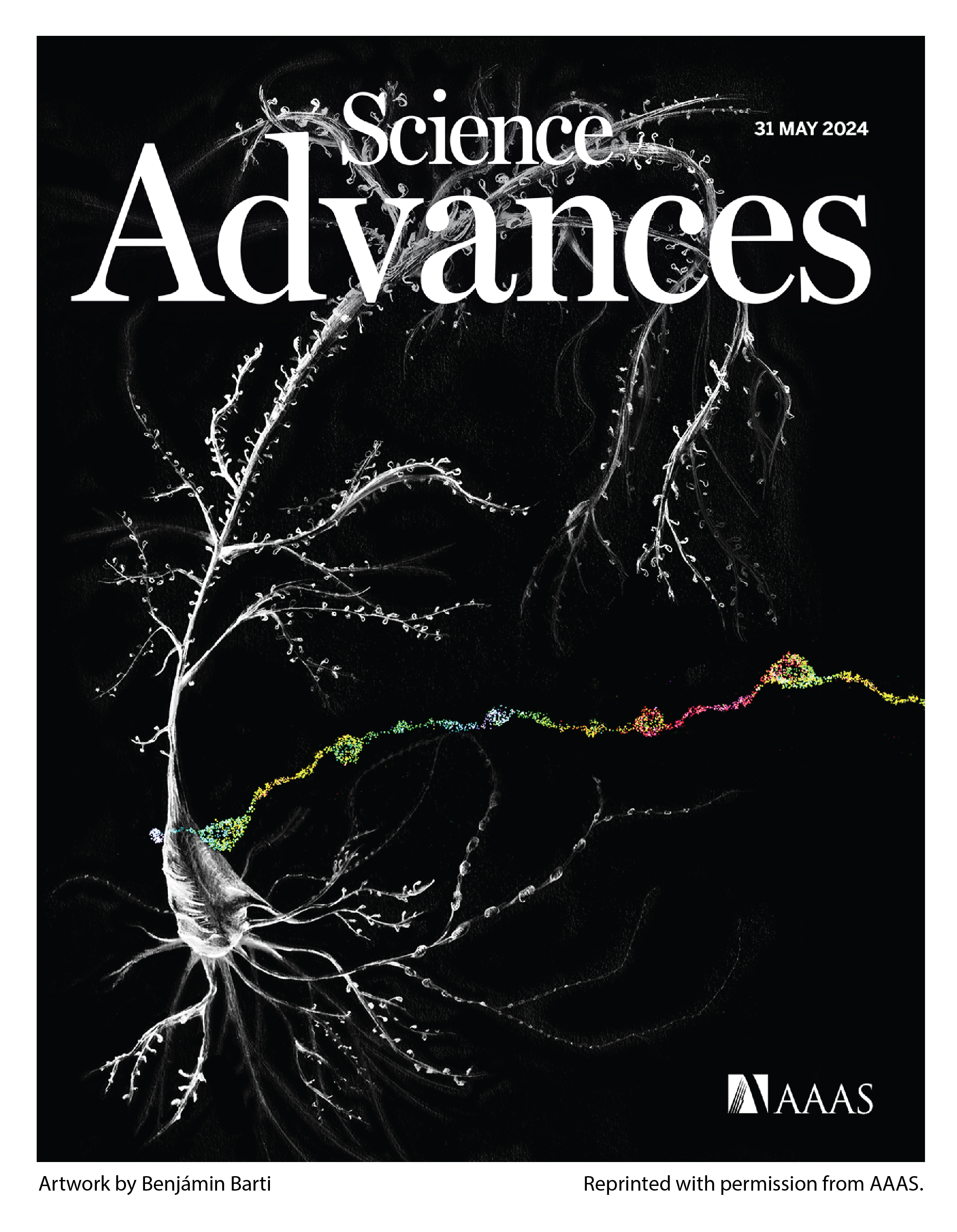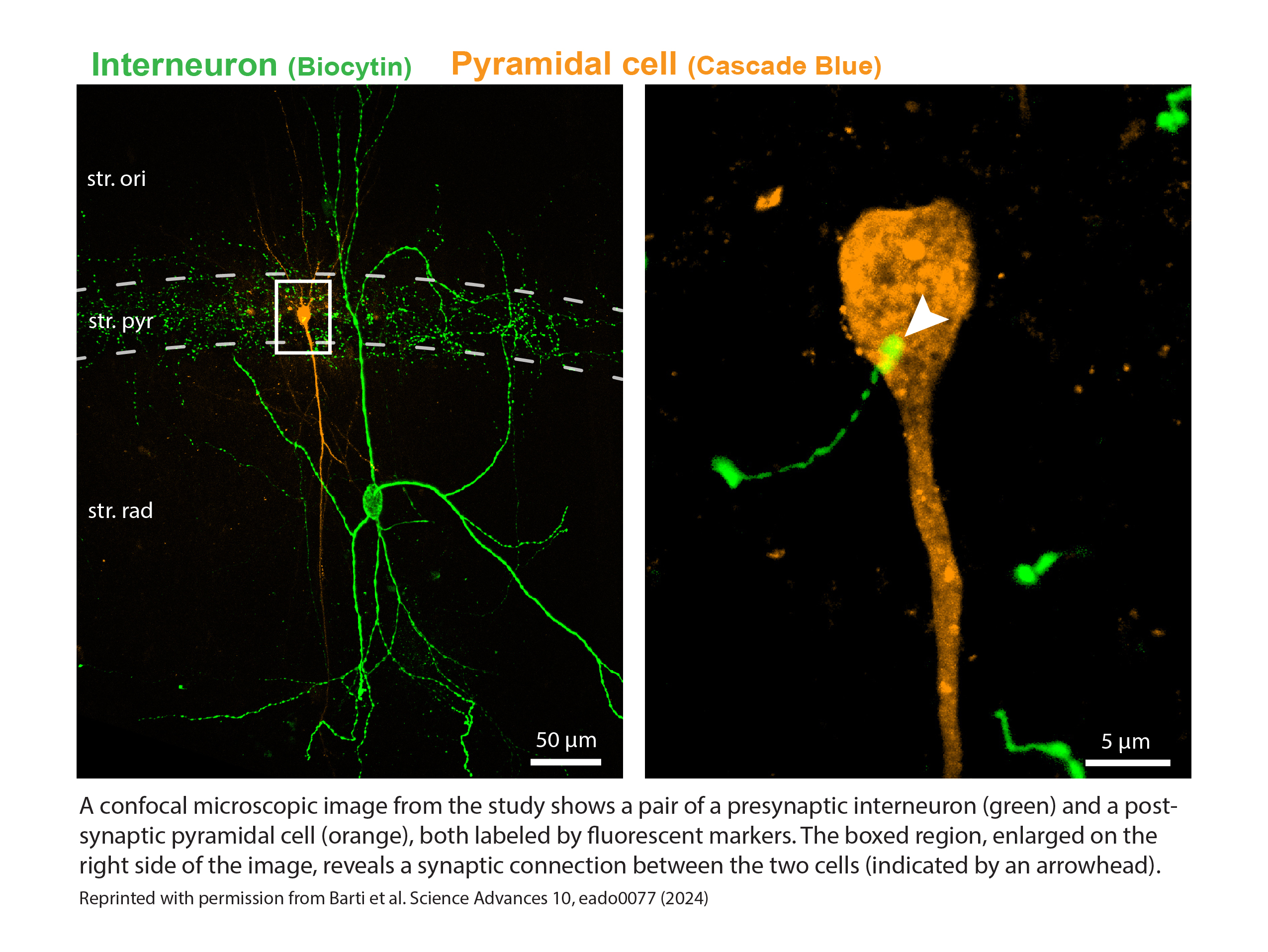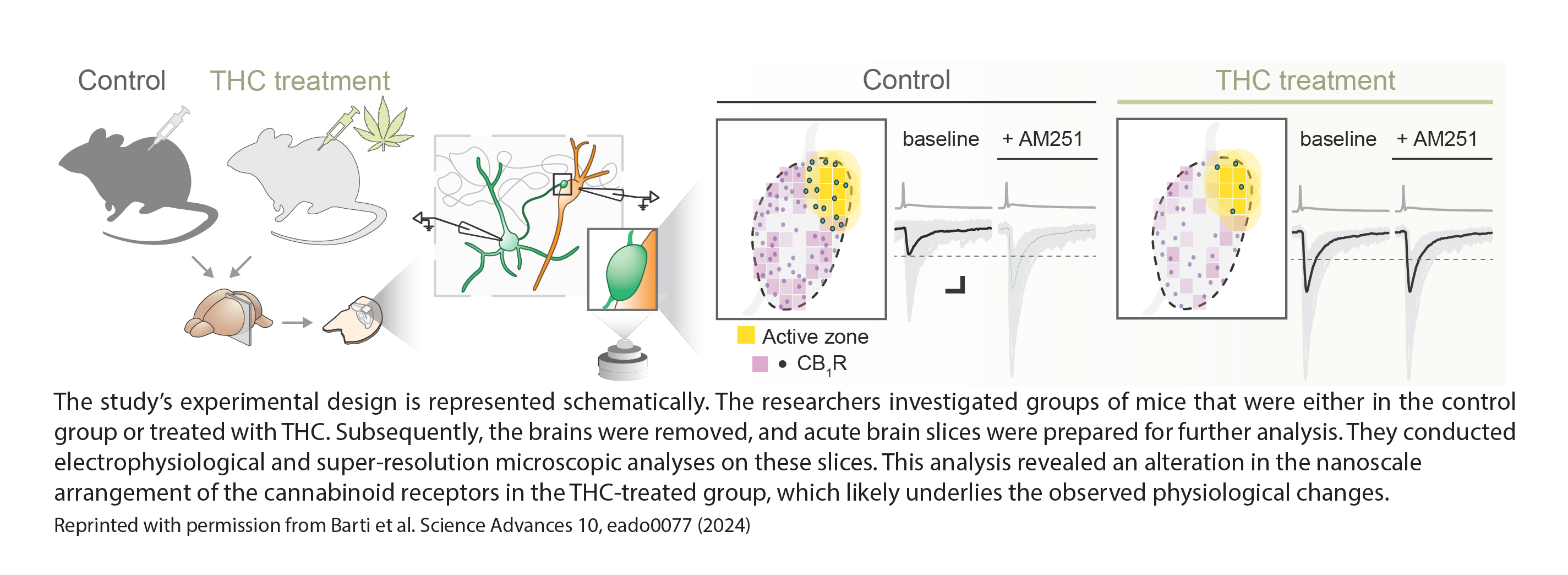Our new study is highlighted on the cover of Science Advances’ May issue
Our work contributes to the understanding of the molecular-level phenomenon of tolerance that occurs with regular cannabis use. Benjámin Barti, a highly talented PhD student of the group, was the lead author of the publication. The credit also goes to Beni for the artistic depiction of a pyramidal neuron featured on the cover page. The rainbow-coloured dots represent cannabinoid receptors on the surface of an incoming axon giving an inhibitory synapse on the pyramidal neuron.

In this study, we examined what determines the strength of feedback in each synapse, or in other words, the strength of retrograde synaptic signaling. We developed a procedure that first measures the strength of signal transmission in the synapse connecting two nerve cells, and then quantifies the spatial arrangement of the molecules involved in signal transmission with nanometer precision using a super-resolution microscope. During our experiments, we studied a unique synaptic phenomenon known as the cannabinoid tone.

Our initial surprising observation was that the two classic endocannabinoid-producing enzymes are not involved in this synaptic phenomenon, suggesting that a new molecular mechanism underlies the cannabinoid tone. We then tested the hypothesis that a group of cannabinoid receptors is continuously active even in the absence of endocannabinoid signal molecules, thereby regulating the strength of synapses. Physiological and molecular measurements revealed that the number of tonically active cannabinoid receptors in the 200-nanometer environment of neurotransmitter release sites significantly influences the strength of synaptic communication between neurons. Finally, we investigated how a six-day treatment with THC, the psychoactive ingredient of cannabis affects the nanometer-scale arrangement of cannabinoid receptors in mice, and found that only the half of the cannabinoid receptors remain in the 200-nanometer area of the neurotransmitter release site. Simultaneously, the phenomenon of cannabinoid tone completely disappeared from the synapses, while the functioning of the classical endocannabinoid signaling pathway showed only a minor change.

This unexpected result is reminiscent of a type of autism with a specific genetic background. According to a 2013 discovery by the group of Nobel laureate Thomas Südhof, the cannabinoid tone is absent in this type of autism, while the traditional endocannabinoid signaling pathways remain unaffected, though the underlying reason for this discrepancy is unknown. Our results suggest that among the many effects of cannabis, there may be molecular changes like those observed in this genetic form of autism spectrum disorder.






